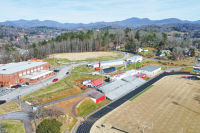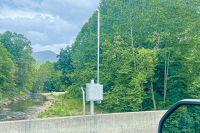Uplifted by the flight of birds
Lately, I’ve been writing a lot about birds. I guess I have them on my mind, in part, because the spring migration season is underway. I heard my first Louisiana waterthrush (a warbler) of the year this past Sunday morning. But then again, birds are always on my mind summer, fall, and winter, too. And I’m not alone. Each week that I write about birds, I receive at least 10 emails from readers who share their bird observations and insights with me. Here we go again.
I’ve always supposed that we’re fascinated by birds because they are attractive, often beautiful. And they can sing and fly. Unlike me, many of you who are reading this can actually sing. So you will not be as awe-struck by that capability as I am. But my guess is that few of you can fly.
Just how bird flight evolved has been hotly debated in academic circles. For what it’s worth, I suspect that those who maintain that bird life evolved from ancient dinosaurs are going to prevail. Their case has been strengthened in recent years by a team of researchers from the Chinese Academy of Geological Sciences. The team unearthed a juvenile dromaeosaur dating back 130 million years, which proved to be the first dinosaur discovered with a body covering apparently consisting of fossilized feathers and down.
Bird flight has no doubt come a ways since those long-ago days when dromaeosaurs were flapping around trying their best to become airborne. As we can readily observe on a daily basis, many modern species have become aerial specialists.
Turkey vultures are generally underrated in this regard. They are experts at reading the thermals created as the earth warms each day. Have you ever spotted a flock of vultures riding upwards in the same thermal in a circular flight pattern? Ornithologists call that “a kettle of vultures.”
Think of the explosive and thereby elusive flight pattern displayed by a turkey, grouse, or bobwhite. Then there is the ungainly, yet somehow graceful, flight of a great blue heron, arising awkwardly with a croak and then leveling out in a long smooth glide.
Related Items
Among raptors, the peregrine falcon is the speed king. One of the most amazing birds in the world, a peregrine feeds on other birds that it takes in mid-air with a powerful dive that may reach speeds in excess of 180 miles per hour.
Ruby-throated hummingbirds are the showboats of the bird world. Their wing beats, which stroke the air at more than 70 times a second, are often heard before one actually sees the bird. They hover, they fly backwards or vertically, and they zoom around. Then, just for the pure fun of it, they dive bomb one another.
One spring day from a high outcrop I watched a pair of ravens mating over Blue Valley near Highlands. Together, they would go so high up into the air that they looked like dark specks. Then they would plummet in tandem, making tight downward spirals, until it appeared they were going to crash into the valley floor. At the very last microsecond, they’d pull out of their dive and then do it all over again.
Another time, I was at Blue Valley watching ravens from a high overlook when one sailed by and eyed me. The first time he came back he did a full somersault. And then, just for good measure, he came by again and did a full body roll, flying for a beat or so while upside down.
“Now that’s flying,” the raven seemed to be telling me.
Barn swallows are the ballet dancers of the bird world. They bring flying to another level. I never tire of watching the patterns — intricate, endless, ever changing, and yet somehow the same — they etch against the sky.
Little wonder that the ancient Cherokees made the birds the guardians of their Upper World, the realm of peace and light and the hereafter. With their songs and with their flight patterns, the birds continue to lift our spirits every day.
George Ellison wrote the biographical introductions for the reissues of two Appalachian classics: Horace Kephart’s Our Southern Highlanders and James Mooney’s History, Myths, and Sacred Formulas of the Cherokees. In June 2005, a selection of his Back Then columns was published by The History Press in Charleston as Mountain Passages: Natural and Cultural History of Western North Carolina and the Great Smoky Mountains. Readers can contact him at P.O. Box 1262, Bryson City, N.C., 28713, or at This email address is being protected from spambots. You need JavaScript enabled to view it..









